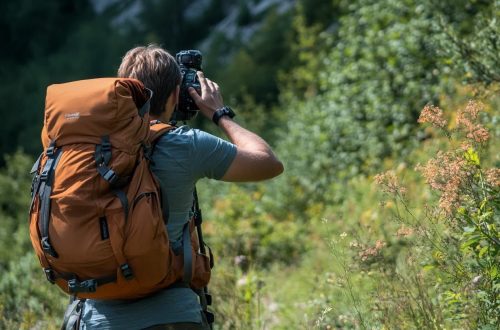Venturing into the great outdoors can be an exhilarating experience, offering a unique blend of tranquility and excitement. Whether you’re hiking through dense forests, camping under starlit skies, or seeking the adrenaline rush of an adventure, nature beckons with open arms. However, along with its beauty and serenity, the wilderness can pose unexpected challenges and risks. That’s why having a solid understanding of first aid is essential for anyone who enjoys spending time in nature. This blog post will guide you through essential first aid tips for outdoor enthusiasts, helping you stay prepared for any mishap that may arise during your adventures.
Understanding the Basics of First Aid
Before setting out on your adventure, it’s important to familiarize yourself with basic first aid terms and assemble a reliable first aid kit. Knowing these essentials will empower you to handle minor injuries confidently and provide initial care during emergencies.
Begin by learning key first aid terms, such as CPR (cardiopulmonary resuscitation), AED (automated external defibrillator), and RICE (rest, ice, compression, elevation). These terms will become invaluable if you encounter an accident or injury in the wilderness. Consider taking a basic first aid course to deepen your understanding and gain practical skills.
Your outdoor first aid kit should include adhesive bandages, antiseptic wipes, gauze pads, adhesive tape, scissors, tweezers, pain relievers, a thermometer, and any personal medications. Customize your kit based on the duration and nature of your trip, ensuring it is lightweight yet comprehensive.
Common Injuries in Outdoor Activities
Engaging in outdoor activities exposes adventurers to various injuries that can range from minor to serious. Awareness of these common injuries will help you prepare for their potential occurrence and enable you to respond effectively.
Cuts and scrapes are frequent companions of outdoor adventures. From sharp rocks on hiking trails to branches in the woods, these injuries are often unavoidable. While most cuts are minor and can be treated with basic first aid, deeper wounds may require professional medical attention.
Sprains and strains are also common during outdoor excursions. Uneven terrain, sudden movements, or tripping over obstacles can lead to twisted ankles or strained muscles. Knowing how to manage these injuries can prevent further damage and facilitate quicker recovery.
Insect bites, although usually harmless, can cause discomfort, irritation, and allergic reactions. Recognizing the signs of a severe allergic reaction and administering appropriate first aid promptly can make a significant difference in managing the situation.
Treatment Procedures for Outdoor Injuries
When faced with a minor injury, knowing how to administer first aid can prevent complications and allow the injured person to continue their outdoor adventure. Here are step-by-step procedures for treating common injuries:
For cuts and scrapes, start by cleaning the wound gently with antiseptic wipes to remove dirt and debris. Apply pressure with a clean gauze pad to stop any bleeding. Once the bleeding has stopped, apply an adhesive bandage or sterile dressing to protect the wound. Change the dressing regularly and monitor for signs of infection.
In the case of sprains and strains, remember the RICE method. Rest the injured area, apply ice to reduce swelling, use a compression bandage to provide support, and elevate the injured limb to minimize swelling. Over-the-counter pain relievers can help alleviate discomfort. If the pain persists or the injury appears severe, seek medical assistance.
For insect bites, wash the affected area with soap and water, and apply a cold compress to reduce swelling. An antihistamine cream can help alleviate itching. If there are signs of an allergic reaction, such as difficulty breathing or swelling of the face, seek emergency medical help immediately.
Advanced Situations and Seeking Help
While many outdoor injuries can be managed with basic first aid, some situations require a more advanced response and professional medical assistance. Recognizing when to seek help is crucial for ensuring your safety and well-being.
Head injuries, fractures, and deep lacerations fall under advanced situations that necessitate immediate medical attention. If someone has sustained a head injury, keep them still and avoid moving them unless absolutely necessary. Apply gentle pressure to stop bleeding and call for emergency help.
In the case of fractures, immobilize the injured area using a splint or makeshift support. Avoid attempting to realign bones and seek medical help as soon as possible. Deep lacerations require pressing with a clean cloth to control bleeding while waiting for medical assistance.
If you find yourself in a remote area without immediate access to medical help, consider using communication devices like satellite phones or emergency beacons to call for assistance. Always prioritize safety and be prepared to administer basic first aid until help arrives.
Prevention and Preparation for Outdoor Adventures
While accidents can happen, taking preventive measures can significantly reduce the risk of injuries during your outdoor adventures. Being proactive and prepared can make a world of difference in ensuring a safe and enjoyable experience.
First, research the area you’ll be visiting and familiarize yourself with potential hazards, such as uneven terrain, wildlife, or harsh weather conditions. Dress appropriately for the environment and wear sturdy footwear to prevent slips and falls.
Hydration is key to maintaining your energy levels and preventing heat-related illnesses. Carry sufficient water and pack nutritious snacks to stay fueled during your adventure. Additionally, apply sunscreen and insect repellent to protect your skin from harmful UV rays and pesky insects.
Always inform someone about your plans and expected return time before heading out. Traveling with a companion is also advisable, as they can provide assistance if needed. Carry a map, compass, or GPS device to avoid getting lost and becoming disoriented.
Conclusion
In the vast and unpredictable realm of the outdoors, first aid knowledge can be your greatest ally. By understanding the basics, knowing how to treat common injuries, and preparing for advanced situations, you can confidently explore nature’s wonders while safeguarding your well-being.
Remember that prevention is the best form of protection. Taking preventive measures, staying informed, and being prepared for the unexpected are essential components of any outdoor adventure. Whether you’re a seasoned hiker or a novice camper, these first aid tips will serve as valuable companions on your journeys into the wild.
By equipping yourself with the knowledge and skills outlined in this guide, you’ll be better prepared to handle any challenges that come your way. Prioritize safety, enjoy the beauty of nature, and thrive as an outdoor enthusiast. If you’re eager to learn more or want to deepen your first aid expertise, consider enrolling in a comprehensive first aid training course.




